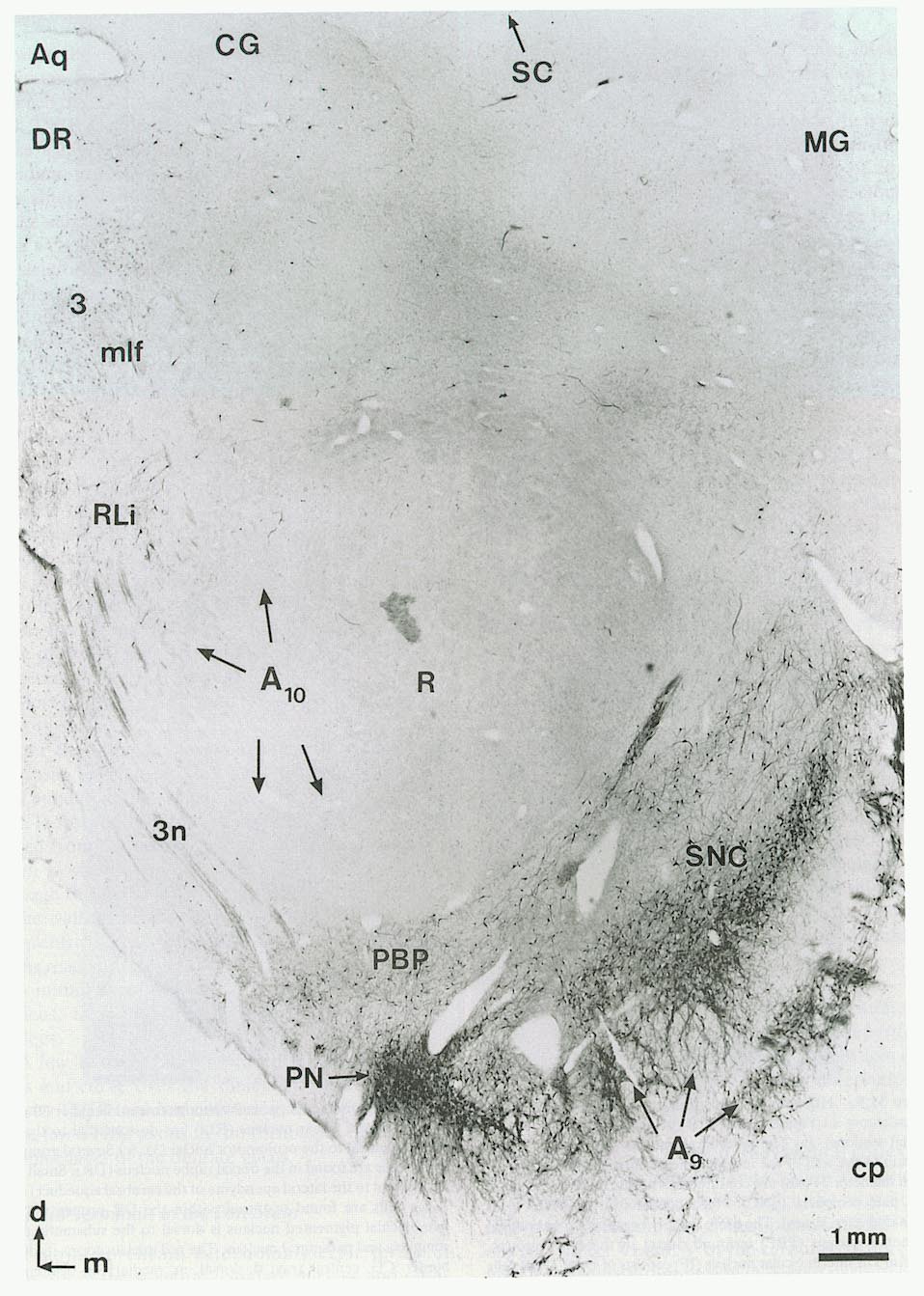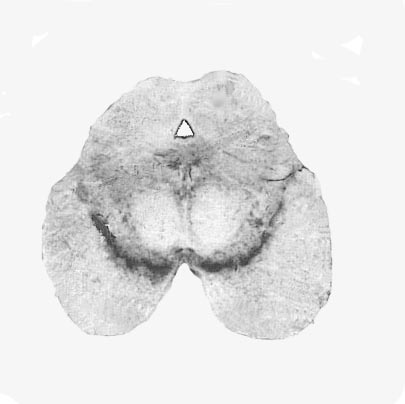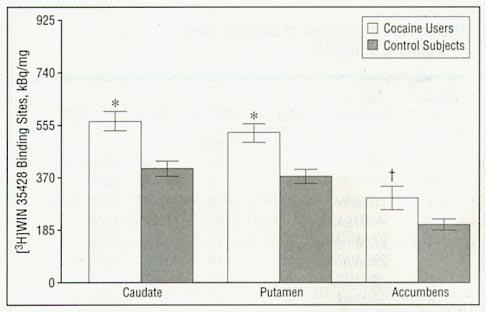|

|
Shown at right is a photomicrograph of the human substantia nigra. The location of various groups of dopamine cell bodies are in this region. Legend: Aq=cerebral aqueduct, CG=central gray, cp=cerebral peduncle, d=dorsal, DR=dorsal raphe nucleus, m=medial, MG=medial geniculate, mlf=medial longitudinal fasciculus, PBP=parabrachial pigmented nucleus, PN=paranigral nucleus, R=red nucleus, RLi=rostral linear nucleus, SC=superior colliculus, SNC=substantia nigra pars compacta, 3= oculomotor nucleus, 3n=oculomotor nerve axon. From The Human Nervous System ed. G. Paxinos; Chapter 31, "Catecholaminergic Neurons", John Pearson, Glend Halliday, Noboru Sakamoto, and Jean-Philippe Michel; San Diego: Academic Press, 1990. |

